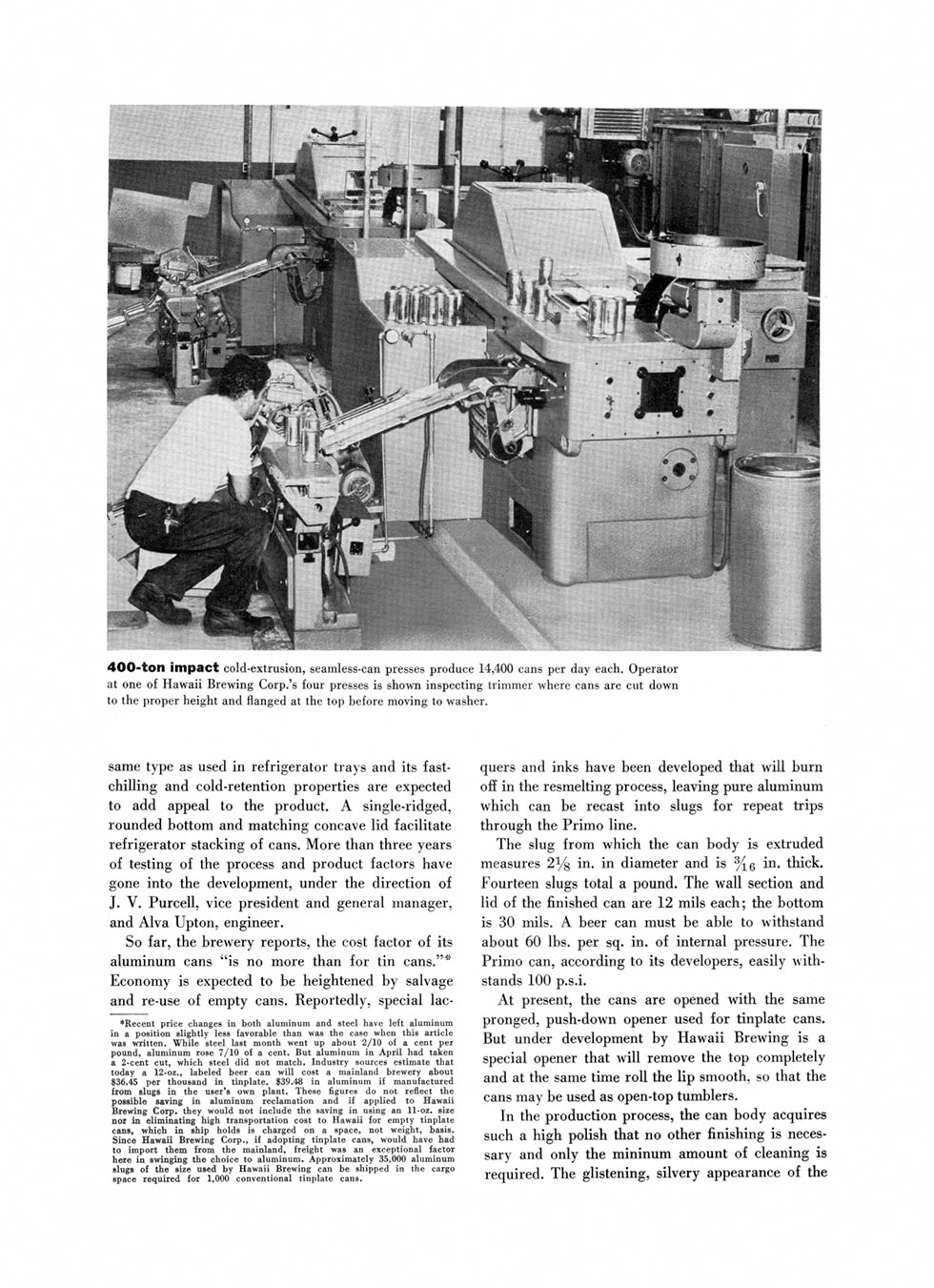


400-ton impact cold-extrusion, seamless-can presses produce 14,400 cans per day each. Operator at one of Hawaii Brewing Corp.'s four presses is shown inspecting trimmer where cans are cut down to the proper height and flanged at the top before moving to washer.
same type as used in refrigerator trays and its fast-chilling and cold-retention properties are expected to add appeal to the product. A single-ridged, rounded bottom and matching concave lid facilitate refrigerator stacking of cans. More than three years of testing of the process and product factors have gone into the development, under the direction of J. V. Purcell, vice president and general manager, and Alva Upton, engineer.
So far. the brewery reports, the cost factor of its aluminum cans "is no more than for tin cans."ť* Economy is expected to be heightened by salvage and re-use of empty cans. Reportedly, special lac
*Recent price changes in both aluminum and steel have left aluminum in a position slightly less favorable than was the case when this article was written. While steel last month went up about 2/10 of a cent per pound, aluminum rose 7/10 of a cent. But aluminum in April had taken a 2-cent cut, which steel did not match. Industry sources estimate that today a 12-oz., labeled beer can will cost a mainland brewery about $36.45 per thousand in tinplate, $39.48 in aluminum if manufactured from slugs in the user's own plant. These figures do not reflect the possible saving in aluminum reclamation and if applied to Hawaii Brewing Corp. they would not include the saving in using an 11-oz. size nor in eliminating high transportation cost to Hawaii for empty tinplate cans, which in ship holds is charged on a space, not weight, basis. Since Hawaii Brewing Corp., if adopting tinplate cans, would have had to import them from the mainland, freight was an exceptional factor here in swinging the choice to aluminum. Approximately 35,000 aluminum slugs of the size used by Hawaii Brewing can be shipped in the cargo space required for 1,000 conventional tinplate cans.
quers and inks have been developed that will burn off in the resmelting process, leaving pure aluminum which can be recast into slugs for repeat trips through the Primo line.
The slug from which the can body is extruded measures 2â…› in. in diameter and is Âľe in. thick. Fourteen slugs total a pound. The wall section and lid of the finished can are 12 mils each; the bottom is 30 mils. A beer can must be able to withstand about 60 lbs. per sq. in. of internal pressure. The Primo can, according to its developers, easily withstands 100 p.s.i.
At present, the cans are opened with the same pronged, push-down opener used for tinplate cans. But under development by Hawaii Brewing is a special opener that will remove the top completely and at the same time roll the lip smooth, so that the cans may be used as open-top tumblers.
In the production process, the can body acquires such a high polish that no other finishing is necessary and only the mininum amount of cleaning is required. The glistening, silvery appearance of the